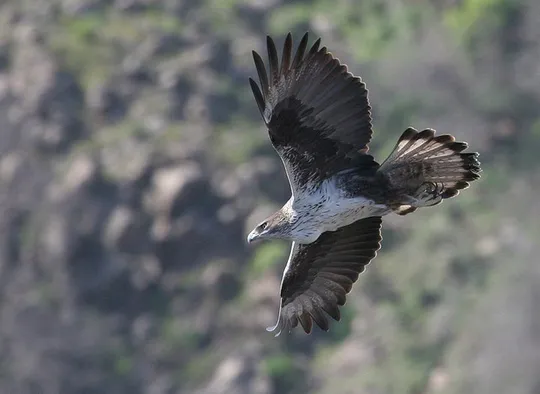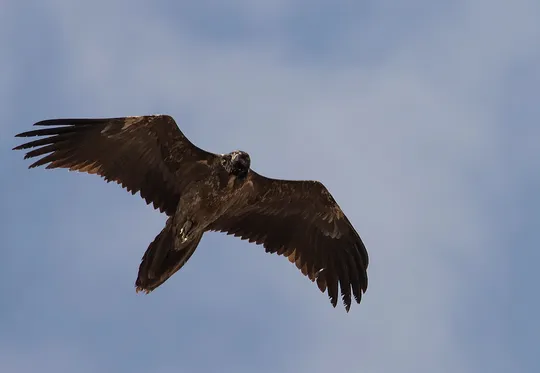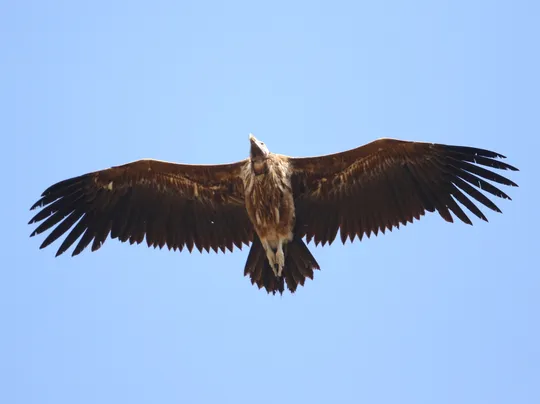Ciconia ciconia
 Vulnerable
Vulnerable
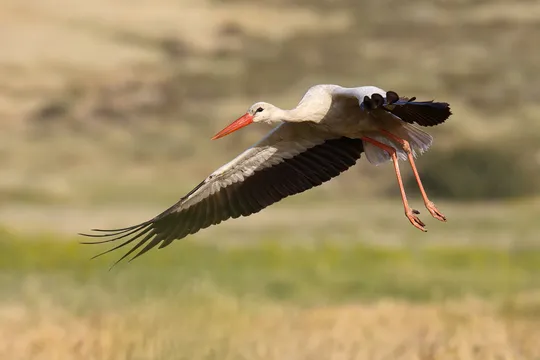
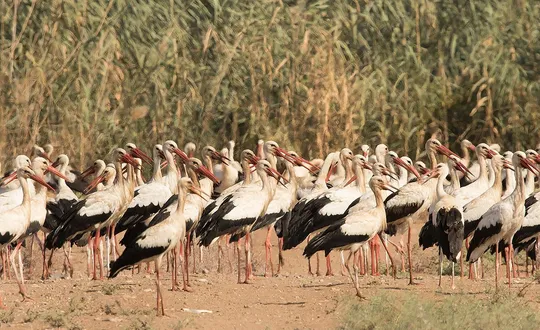
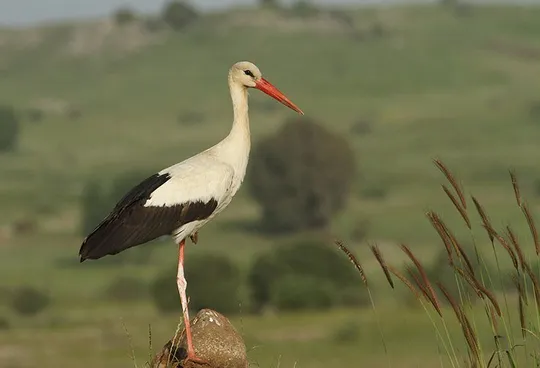
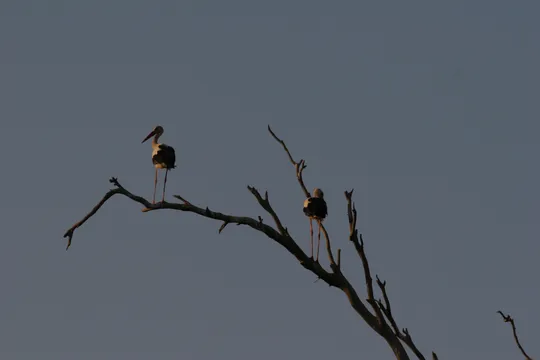
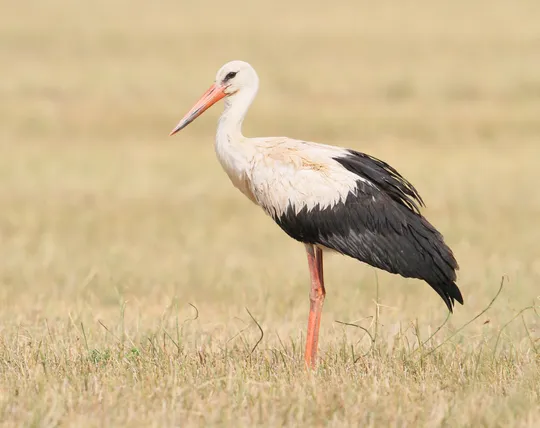
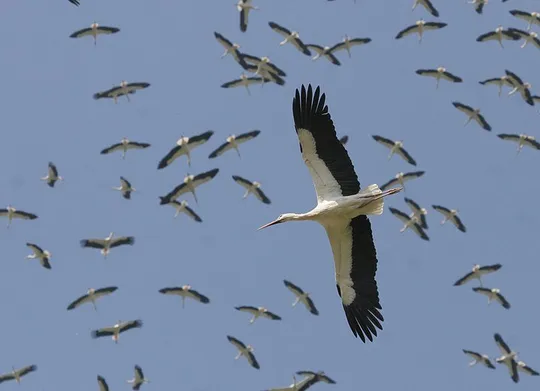
| Habitats | Cropland, Rural Areas |
|---|---|
| Presence In Israel | Migrant, Summer |
| Breeding In Israel | Breeder |
| Migration Types | Long Range |
| Zoographical Zones | Mediterranean, Irano-Turanian |
| Landscape Types | Plains & Valleys, Rural Area |
| Vegetation Types | Cropland, Steppe, Herbaceous |
| Vegetation Densities | Low |
| Nest Locations | Buildings |
| Diet Types | Invertebrate, Terrestrial Vertebrates |
| Foraging Grounds | Ground |
| Body Sizes | Large (over 1000g) |
| Threat Factors | Unknown |
The White Stork is a large bird, with a long neck and legs, one of the most prominent and well-known birds in Israel. White Storks can be identified by their white plumage, black flight feathers, narrow black eye stripe and their red beak and legs. In flight, the neck is stretched forward, the legs protrude beyond the tail, and the contrast between the black primary feathers and the white coverts and body plumage is very noticeable. Storks are usually quiet, but during the breeding season, they clack their beaks noisily, and stretch their neck and head backwards.
White Storks pass over Israel in large numbers in spring and autumn. They are relatively common winter visitors and rare breeders in the Golan Heights and along the Jordan Valley.
Storks nested in Israel in the past, and only resumed breeding in the 1970s. During the 1980s the number of breeding pairs in Israel reached about 15, most of them in the Golan. Since then there has been a gradual decline and in recent years there are only 5-6 breeding pairs, and their breeding success is very low (Sondra Turjeman, pers. comm.).
White Storks nest in open areas, which usually include water bodies or wetlands, such as irrigated fields, meadows, lakeshores and pools. The large nest is built on rooftops, electrical poles and trees.
No specific conservation measures have been taken for this species to this day.
- זו-ארץ, ש. 1990. קינון החסידה הלבנה בישראל. ארץ וטבע
- פז, ע. 1986. עופות. מתוך אלון, ע. (עורך), החי והצומח של ארץ ישראל. כרך 6. הוצאת משרד הביטחון, ישראל.
- , 2002. Willem Van den Bossche, Peter Berthold, Michael Kaatz, Eugeniusz Nowak and Ulrich QuernerEastern European White Stork populations: migration studies and elaboration of conservation measuresGerman Federal Agency for Nature Conservation 2002
- Shirihai, H., 1996. The Birds of Israel. Academic Press, London.
- Symes, A. 2013. Species generation lengths. Unpublished, BirdLife International.
- Species page at Birdlife International
Current Occupancy Map
| Data Missing | Sporadic | Limited Sites | Low Density | High Density |
|---|---|---|---|---|
| 0 | 0 | 0 | 0 | 0 |
Distribution maps
The maps presented here provide visual information on the distribution of species in Israel from the past and present, and the changes in occupancy and breeding density during the comparison period. For further reading
Relative Abundance 2010-2020
Breeding density values in the current decade as determined from experts' opinion and observations from databases.
| Data Missing | Sporadic | Limited Sites | Low Density | High Density |
|---|---|---|---|---|
| 8 | 12 | 12 | 21 | 19 |
Relative Abundance 1980-1990
Density values based primarily on the book The Birds of Israel (Shirihai 1996).
| Data Missing | Sporadic | Limited Sites | Low Density | High Density |
|---|---|---|---|---|
| 5 | 14 | 14 | 17 | 22 |
Occupancy 1990-2020
The map shows differences in the species breeding distribution between the 1980's breeding map and the current weighted breeding evaluation. Negative value - species previously bred in the grid and is not presently breeding; positive value - species has not previously bred in the grid and is currently breeding.
| Data Missing | No Change | Occupancy Increase | Occupancy Decrease |
|---|---|---|---|
| 6 | 35 | 1 | 9 |
Change in Relative Abundance 1990-2020
The map shows the changes in the relative abundance of a species in each of the distribution grids between the breeding map of the 1980s and the weighted current breeding evaluation. Negative values - decline in abundance; positive values - increase in abundance; zero - no change in abundance.
| 80 to 100 | 50 | 20 to 30 | No Change | 30- to 20- | 50- | 100- to 80- | Data Missing |
|---|---|---|---|---|---|---|---|
| 0 | 4 | 2 | 22 | 12 | 14 | 11 | 16 |
| Rarity | |
|---|---|
| Vulnerability | |
| Attractiveness | |
| Endemism | |
| Red number | |
| Peripherality | |
| IUCN category | |
| Threat Definition according to the red book |
 Contributed:
Contributed: 
